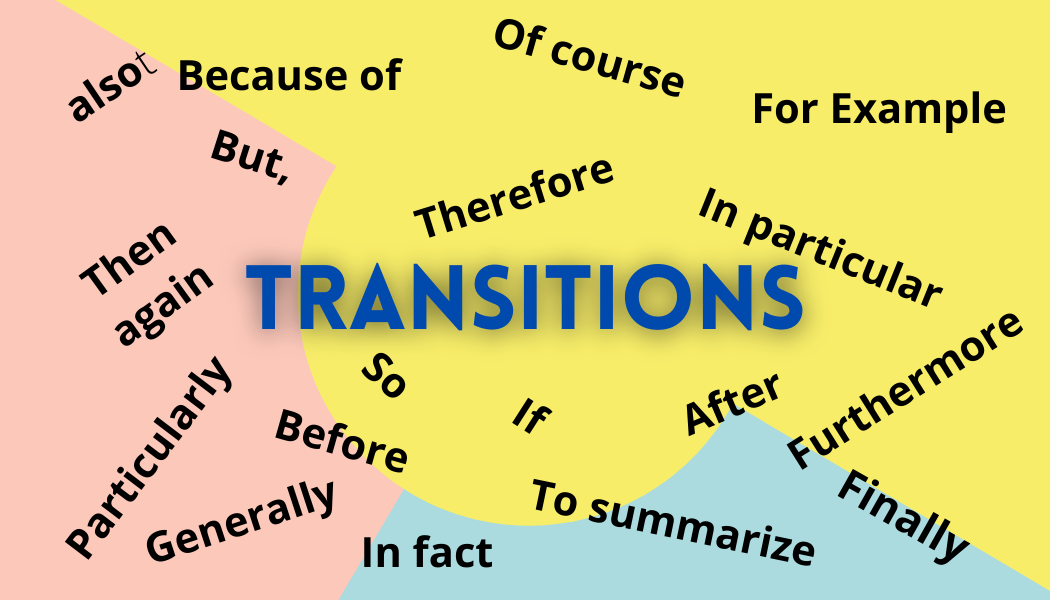Transitions What They are and When to Use Them
In any type of writing, whether you’re writing e-commerce content or authoring a book, the ability to connect sentences and paragraphs properly is a primary mark of a talented writer. A paragraph full of short, choppy sentences is difficult to read and may even be confusing.
One of the best ways to connect things together is by using transitions. These words and phrases help you make transitions from one thing to the next, making your copy more enjoyable and easy to read.
While they may not all be used in every type of content you write, there are six main types of transitions:
- Cause and effect – Otherwise known as purpose or condition transitions. They help to explain the relation between ideas.
- Example: I’m thirsty, so I’m getting a drink.
- Contrast – If you have two different ideas, contrast transitions help to introduce those differences.
- Example: I don’t like vegetables. However, I love green beans.
- Emphasis and example – Provide more information about a previously introduced idea.
- Example: I have a lot of phobias. For instance, I’m scared of heights.
- Enumeration and addition – Otherwise known as similarity or agreement transitions. These reinforce relationships and express agreement between two ideas.
- Example: I’m going to write three product descriptions. In addition, I’m going to edit a blog.
- Time – Help to define time in copy.
- Example: I’m going to eat breakfast, then I’m going to do some work.
- Conclusion – As you come to the end of your copy, conclusion transitions either help to summarize the information or introduce your final points.
- Example: Generally speaking, you should try to use transition words in your writing.
Transition Word Examples
| Cause and effect | If, then, therefore, thus, unless, given that, when, whenever, while, because of, accordingly, as long as, in order to, therefore, so that, due to, as, since |
| Contrast | In contrast, different from, of course…., but, at the same time, on the other hand, even so, though, then again, but, unlike, still, or, yet, while, besides, as much as, even though, although, instead, whereas, despite, otherwise, however, rather, nevertheless |
| Emphasis and example | Including, notably, like, to be sure, namely, truly, chiefly, indeed, certainly, surely, in other words, for one thing, in this case, for this reason, in fact, in general, in particular, in detail, for example, for instance, to demonstrate, to emphasize, to clarify |
| Enumeration and addition | As well as, moreover, together with, of course, likewise, similarly, furthermore, additionally, again, to, and, also, then, equally, like, as, too, not only….but also, in addition, first, second, third, in the light of |
| Time | Before, after, about, when, since, then, till, until, last, later, as soon as, whenever, eventually, meanwhile, during, whenever |
| Conclusion | Generally speaking, after all, in fact, in summary, in conclusion, to summarize, to sum up, all in all, usually, ultimately, obviously |
Using Transitional Words Effectively
Using transitional words isn’t as easy as it may look. While they may help to improve the flow of copy, using too many may make your writing appear fluffy. Follow these best practices to learn how to effectively use transitions.
- Understand the relationship between the ideas. Ensure that you fully understand what you are writing about, and the relationships between the sentences or paragraphs. This will help you understand which transitions are the best to use.
- Know the right transition words to use. Not every transition word is suitable for every type of copy. Be sure the word or phrase you use is appropriate for what you’re writing and what you’re trying to say. Also, make sure you don’t overuse the same transition word, otherwise you risk your copy becoming repetitive and boring.
We always strive to give our clients the best copy possible, whether we are writing a product page or a long buying guide. When you know what transition words are, and how to use them correctly, you should find that your writing becomes more concise, flows nicely and is easier to understand, which should help you increase your writer/editor scores.

